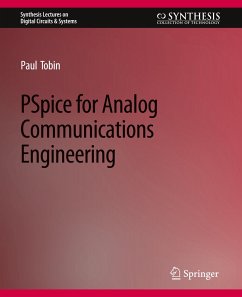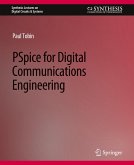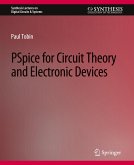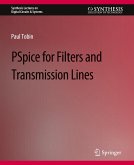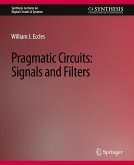In PSpice for Analog Communications Engineering we simulate the difficult principles of analog modulation using the superb free simulation software Cadence Orcad PSpice V10.5. While use is made of analog behavioral model parts (ABM), we use actual circuitry in most of the simulation circuits. For example, we use the 4-quadrant multiplier IC AD633 as a modulator and import real speech as the modulating source and look at the trapezoidal method for measuring the modulation index. Modulation is the process of relocating signals to different parts of the radio frequency spectrum by modifying certain parameters of the carrier in accordance with the modulating/information signals. In amplitude modulation, the modulating source changes the carrier amplitude, but in frequency modulation it causes the carrier frequency to change (and in phase modulation it's the carrier phase). The digital equivalent of these modulation techniques are examined in PSpice for Digital communications Engineering where we examine QAM, FSK, PSK and variants. We examine a range of oscillators and plot Nyquist diagrams showing themarginal stability of these systems. The superhetrodyne principle, the backbone of modern receivers is simulated using discrete components followed by simulating complete AM and FM receivers. In this exercise we examine the problems ofmatching individual stages and the use of double-tuned RF circuits to accommodate the large FM signal bandwidth.
Bitte wählen Sie Ihr Anliegen aus.
Rechnungen
Retourenschein anfordern
Bestellstatus
Storno

